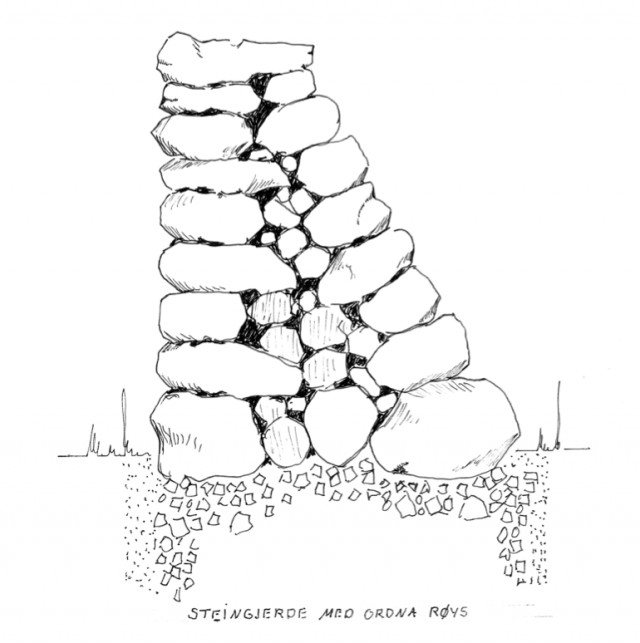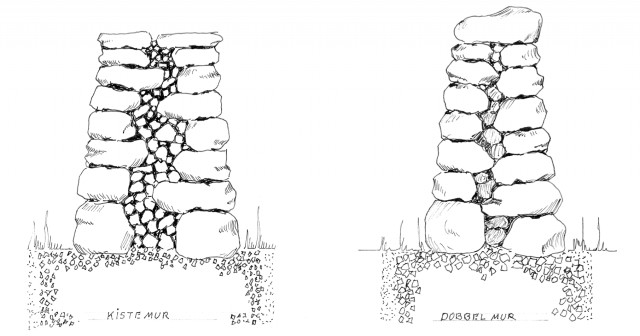Stone- challenge and resource
When clearing land for arable, stone is a challenge. At the same time stone is also a resource as building material for walls. Stone walls have long traditions and are characteristic for the Norwegian agricultural landscape.
The soil at Lista is full of stones, but is self-draining and good arable earth when the stones are removed. The great number of stone walls and clearing cairns speaks of a long time of clearing stone to produce more food.
The oldest stone walls are from the elder iron-age and connected to agriculture. This pastoral fence is called “utgard” or “bøgard”. The “utgard” was there to hinder the animals from going into the fields of crops. Remains of the “utgard” can be seen in the terrain.
The way a stone wall looks and functions has changed with the development of farming. The stone walls still serve a lot of purposes. They keep farm animals in, separate arable land and pasture land, and mark the boundaries of farms and property.
In selected cultural landscape Vest-Lista we take care of the old stone-walls. They are restored with local know-how in a traditional manner. The stone-walls need yearly maintenance, with repairs to damage and removal of unwanted vegetation.
Stone-walls can be built in differing ways. The method of construction is decided by the access to stones and by the function the wall is meant to fill. The “chest-wall” consists of two equal rows of stones with rubble between the rows. The “double-wall” has two rows of stones but no filler between them. The “single-wall” is only one row of stones.

